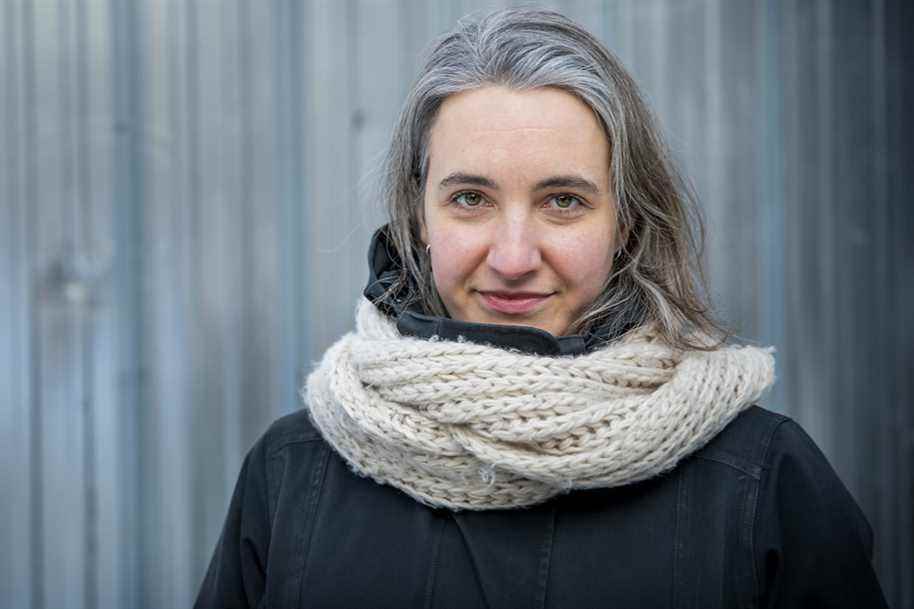In My delirium, Myriam Gendron takes hold of the traditional Quebec and North American repertoire to breathe life and meaning into it. An album released earlier this fall, but since the holidays are often synonymous with traditional music, we took the opportunity to meet the one who likes to make new with old.
The reception is more than positive since leaving My delirium, which is also on many lists of the best albums of 2021. And Myriam Gendron asked no more.
“This is what I wanted, for it to travel quietly by word of mouth … I don’t want to be known, that worries me more than anything else.” This is the music that I want to put forward and for now, this is what seems to be happening. ”
Seven years ago, Myriam Gendron, who studied literature and who is a bookseller by profession, launched “a little by accident” a first album, Not So Deep As Well, where she had set poems by the American Dorothy Parker to music.
“It was a project for fun. I was composing without thinking that I was making an album. But he has had great success, especially abroad. And above all, it gave confidence to Myriam Gendron, for whom music was until then above all a hobby.
Redevelopment
Two children who kept her busy and a scholarship from the Conseil des arts et des lettres du Québec (CALQ) later, which allowed her to work full time on her project from October 2020 to April 2022, Myriam Gendron is so arrived this fall with My delirium, hybrid and bilingual album where, in the same spirit as Michel Faubert, for example, she did a job of reappropriating folklore, but above all of reorganizing it.
“There are borrowings, collage, writing, adaptation, translation, original compositions…”, she lists. Like electronic music composers or rappers, Myriam Gendron has made what we might call mash-up, giving these pieces which have sometimes traveled for several centuries a new color.
Well that’s the time, eh? Personally, I find it a very rich creative process. Anyway, we all work from what is already there, even when we don’t realize it, because we are the sum of our influences. I like this relationship to time and to the past which unfolds in an explicit way.
Myriam Gendron
Folklore, Myriam Gendron recalls, is by definition music which has traveled by oral tradition, and which has been transformed “with time and people’s reality”.
If we tend to see these songs as “museum objects”, it is because the recordings have frozen them a little in time. But there is no reason for these versions to be final, especially since singing them as they are would not make so much sense today, she believes.
“I’m trying to put some life back into it. Because they still have things to tell us these songs. In any case, they still speak to me, to me. It is not for nothing that they have stood the test of time! You just have to mold them a little. ”
Mythology
Myriam Gendron is not an ethno-musicologist, but she ended up taking an interest in the history of songs, their roots and their unsuspected crossroads, the sometimes tortuous paths that have led them to us. But it is really by “crush” that she chose each of the 15 songs of the album, for their strong melodies which are often “real earworms”, for the universal themes which are sometimes similar to Greek mythology.
And by bringing them back to “their essence”, by removing geographical and historical references, words difficult to pronounce today or religious morality, a kind of mythology emerges, archetypes which help to better understand the good, the evil and everything in between, she believes. And they allow her to speak of love, feminine desire and openness to others with just as much relevance.
I have found a lot of tools in trad music to talk about the world around me. When you remove all the specifics of the story, what is left? It’s a bit like that, my quest. What makes these songs through time is that. It is their essence.
Myriam Gendron
Born in Ottawa, the 33-year-old musician grew up in Gatineau, Washington and Paris before settling in Montreal at the age of 16. She came to folk through Bob Dylan and Leonard Cohen, which explains why she drew on the repertoire from Quebec, but also from the United States.
The singer clearly prefers the richness of the past to the obsession with novelty and originality. “It is to deny the very essence of art, which is a continuum,” she believes. So if she does another album – in fact, there will be one, because for the first time in her life, she felt the conviction that she was “exactly in the right place” – it will necessarily be folk, at ” deep meaning ”of the term.
“That is to say, music that will draw on what is already there, in the past, to shape it in the light of the present. »Who makes new with old.

Folk-trad
My delirium – Songs of love, lost & found
Myriam Gendron
Feeding Tube Records / the claus albums

